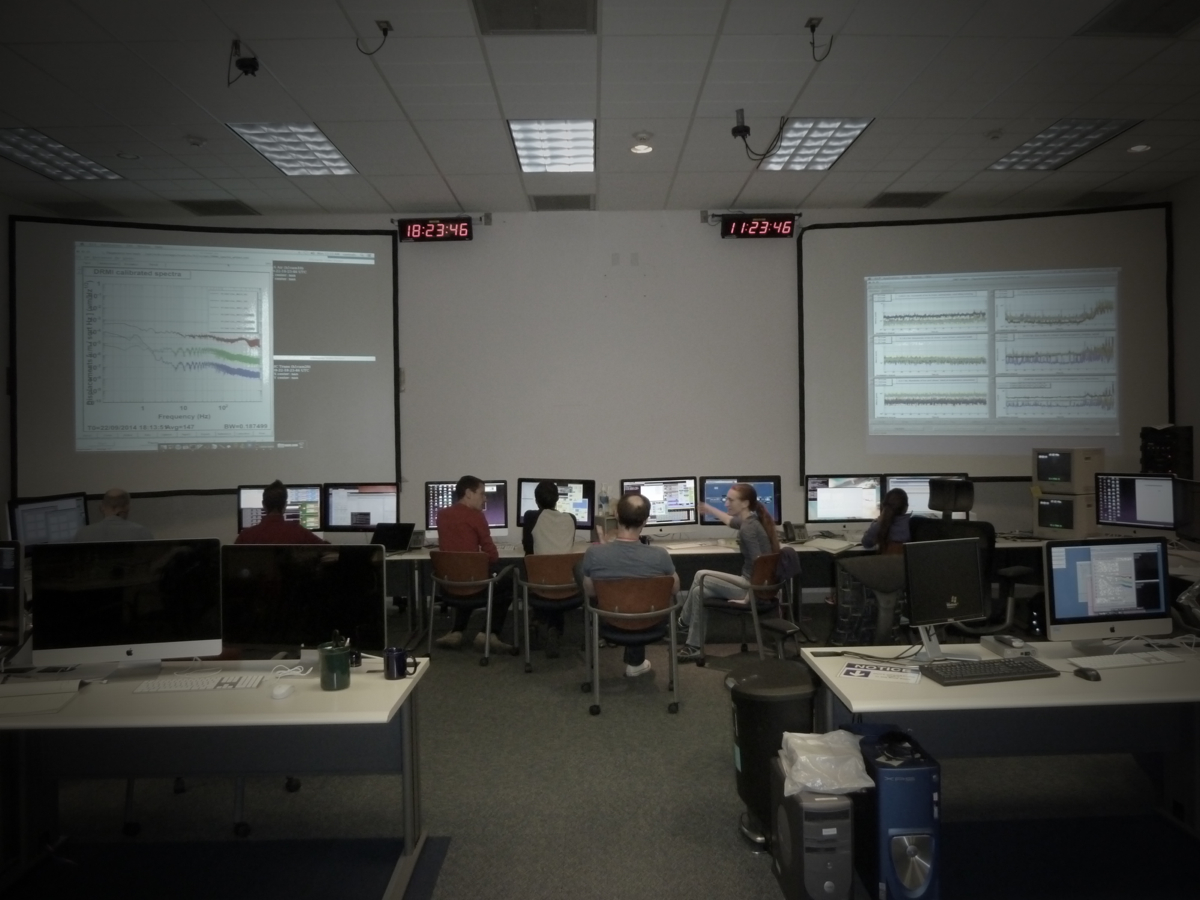On ITMY, we are testing the blend configuration in use LLO (see 14210 for details). It should help reducing the Z to RZ couplings. The document attached shows the coherence between the Optical Lever Yaw motion, and the degrees of freedom of Stage 1 ISI (measured by the T240s):
- Each page shows 5 hours of data taken between 1am and 6am PT
- The three plots on the left show time series. Top left is the optical lever, middle left is Stage 1 translations, bottom left is Stage 1 rotations.
- The six plots on the right show coherence as a function of time (5 hours on the x axis) and frequency (0.01 Hz to 1 Hz on the y axis). Red indicates a coherence of 1. Blue is a coherence of 0. Top right plot is coherence between Stage 1 X and optical lever Yaw, second from top is between ISI Y and optical lever Yaw... bottom right is coherence between Stage 1 RZ and optical lever Yaw.
Sunday morning: the ISI was controlled with the LHO configuration that has been in use lately (see 14210 for details). There is big coherence between Z, RZ and the optical lever at the microseism and at sub 0.1 Hz frequency. Optical lever RMS over ground motion RMS is about 16.5 rad/m/s.
Monday morning: same configuration, same results and comments. The Optical lever RMS over ground motion RMS is about 15.5 rad/m/s.
Tuesday morning: the LLO configuration is ON. There is no more coherence between Z, RZ and the optical lever Yaw motion (except for some time around 4am PT, maybe the M4.4 at 3:44am in China?). The Optical lever RMS over ground motion RMS is about 11 rad/m/s.
Wednesday morning: the guardian manager has been inadvertendly un-paused, re-engaging the Stage 1 RZ loop, and putting Stage 2 in dmaping only. The coherence is back and the motion ratio is 23 rad/m/s, but this is not a relevant configration.
We have re-put the ISI in the LLO configuration. If the data from the coming night is good again, we'll work on propagating this config to the other units, and updating the guardian parameters.
The last page show optical levers motion on the left (ASD on top, RMS at the bottom), for each of the test masses. Ground motion at corner and end station is shown on the right (ASD on top, RMS at the bottom).
A few comments:
- Though the ground motion is similar at the three stations and in the X and Y directions, the optical levers show very different RMS results. Calibration might need to be checked.
- The frequency content also look very different: SEI not performing the same from chamber to chamber? SUS damping loops not performing the same?
- It looks like there is a 0.3 Hz comb on ETMY. We checked the ISI CPS, they are ok. Optical lever comb?










